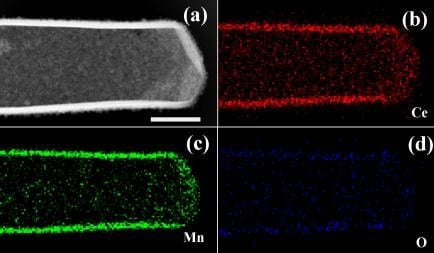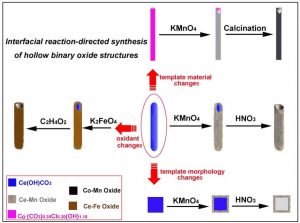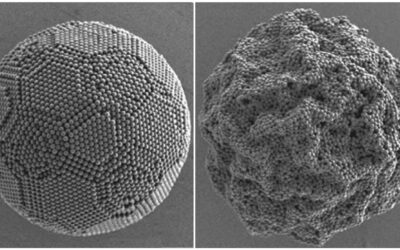Binary metal oxide nanotubes are an important emerging class of materials because of their potential applications in many fields such as catalysis and ferroelectrics. Although template-assisted synthesis based on interfacial reaction is one of the most effective approaches for preparing hollow, single metal oxide (MOx) structures, this method is rarely employed for the synthesis of hollow binary metal oxide (M1-M2Ox) structures. Now, a new, simple avenue for the general synthesis of hollow structured binary oxide has been reported by Guozhu Chen, Federico Rosei, and Dongling Ma from the Institut National de la Recherche Scientifique in Montreal, Canada.
The researchers described an interfacial oxidation/reduction-directed synthesis of hollow binary oxide structures with different shapes (nanotubes and nanocubes) and compositions (Ce-MnOx, Co-MnOx and Ce-FeOx). For example, Ce-MnOx nanotubes were fabricated by treating Ce(OH)CO3 templates with KMnO4 solution. Such formed Ce-MnOx nanotubes exhibit good catalytic activity in CO oxidation and adsorption performance in water treatment.
Thanks to the mild synthesis conditions, the group believe it should be possible to scale up the procedure. They also envision that this method could be easily extended to fabricate other hollow binary oxide nanocomposites by choosing suitable templates and oxidation/reduction pairs.
















